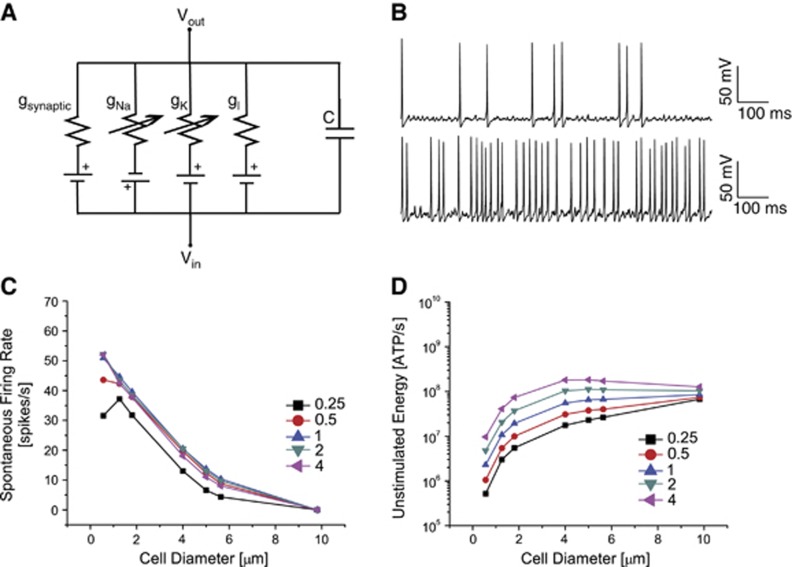Figure 1.
The single-compartment model. (A) Single-compartment model with two voltage-gated conductances, gNa and gK, and a Leak conductance, gl. The model has a capacitance, C, determined by the size of the compartment and receives excitatory synaptic inputs, gsynaptic. (B) Top: An example of spontaneous action potentials triggered by channel noise in a 100 μm2 compartment with the same density of voltage-gated ion channels as the original squid axon model. Bottom: An example of spontaneous action potentials triggered by channel noise in a 10 μm2 compartment with half the density of voltage-gated ion channels as the original squid axon model. (C) The rate of spontaneous action potentials in cells varying from 0.6 to 9.8 μm in diameter (equivalent to 1 to 300 μm2 compartments) for channel densities ranging from a quarter of to four times the density of voltage-gated Na+ and K+ channels found in the squid giant axon. There is no excitatory input stimulus. (D) The corresponding metabolic energy consumption for the compartment sizes and channel densities shown in C. Colors and symbols indicate the density of the voltage-gated ion channels.

